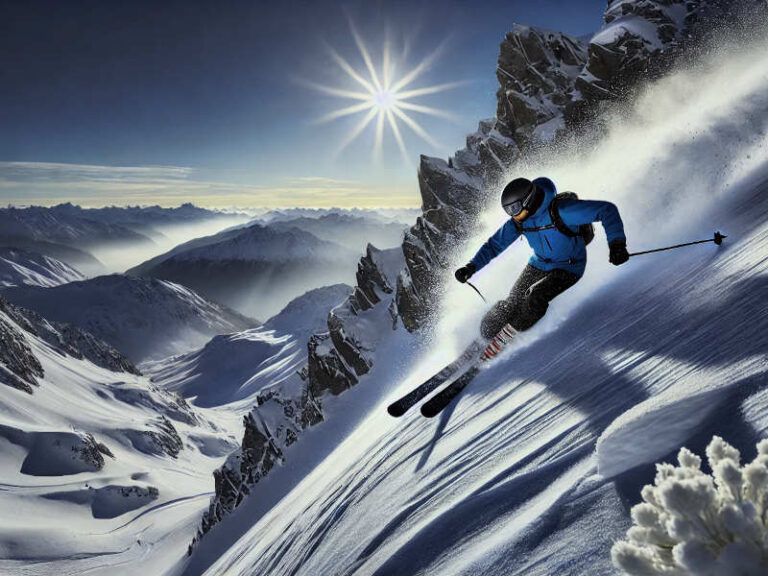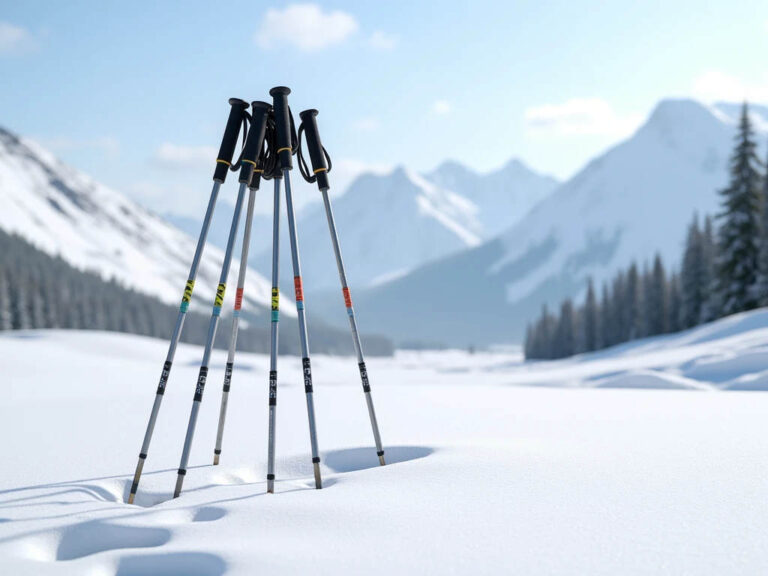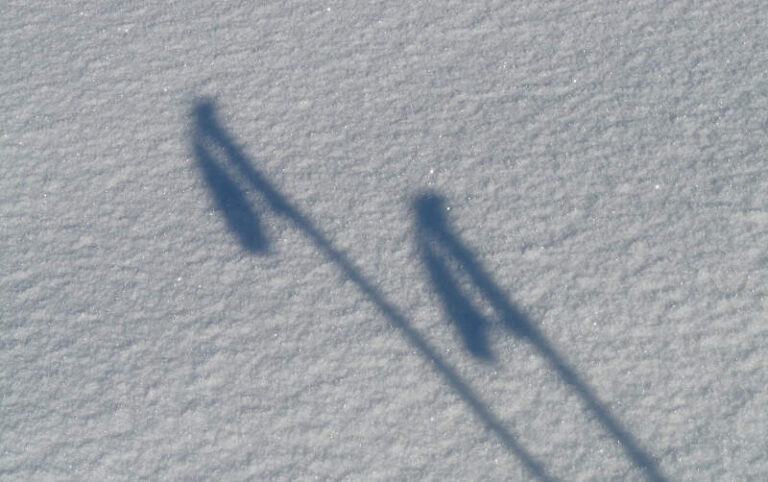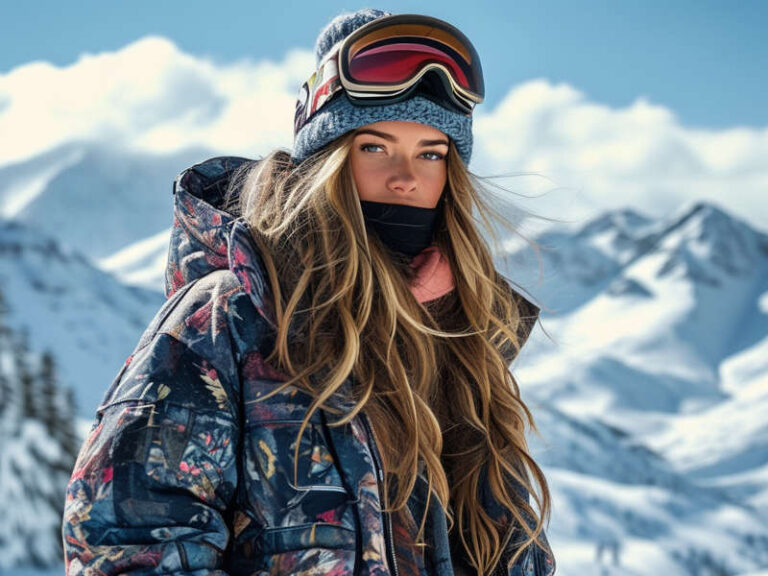Beginner’s Guide to Safe Skiing on Steeper Slopes
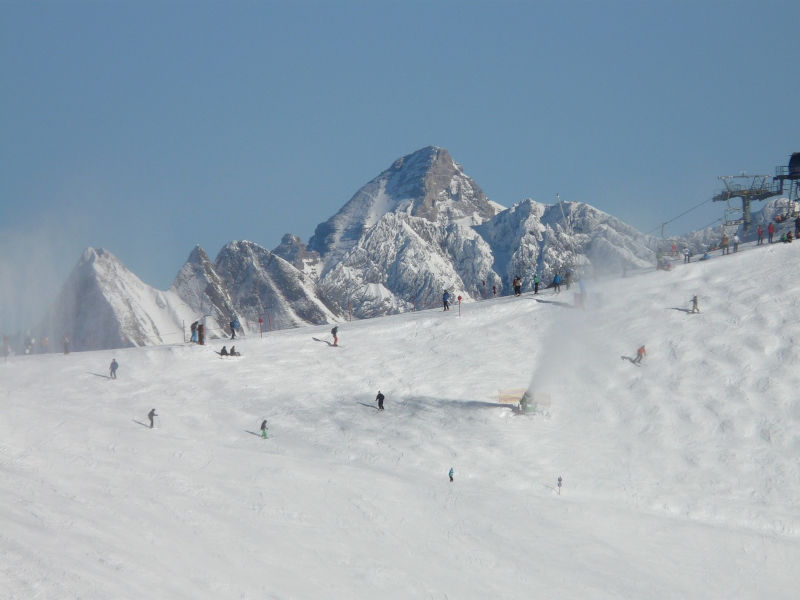
So, you’ve been gliding down the beginner slopes, and you’re feeling ready for something a bit steeper. Awesome! But as enticing as those big drops look, skiing on steeper slopes requires more skill, control, and confidence.
This guide will give you the techniques and drills you need to tackle those challenging inclines safely. Remember, some practice on these skills will make the difference between a smooth descent and an unplanned and potentially dangerous slide down the mountain.
Table of Contents
Start with the Basics
Before jumping in, let’s talk about why skiing on steeper slopes is different. When the slope gets steeper, your speed picks up faster, and you’ll have less time to react. That’s why skiing steeps isn’t just about pointing downhill and hoping for the best; it’s about controlling your descent with purpose and precision.
I personally had numerous experiences going down mid-level runs while a beginner, trying to stay in control (not very successfully), all the while being very stressed out and scared. Not a fun time and not very safe.
By using specific techniques—like selecting the right turn, pole planting, and controlling speed—you’ll turn a mid-level slope into a fun challenge rather than a nightmare.
Choosing Your Turn: Understanding Different Turns and When to Use Them
Turns are your primary way to control speed and direction. You likely know some of these turns already. Different turn types suit different slope angles and conditions, so let’s break down the options.
Snowplow Turn
A snowplow turn is one of the first techniques beginners learn and, surprisingly, it’s still useful on steeper slopes when things feel extra intense. Snowplow is also lovingly known as ‘pizza’ due to the triangular shape your skis make.
- How to Do It: Start by pointing the tips of your skis toward each other in a V-shape, creating friction that slows you down. Shift your weight slightly to one side to initiate the turn.
- When to Use It: Ideal for controlling speed on steeper sections when you feel out of control or need a confidence boost.
Stem Turn (Wedge Turn)
Think of the stem turn as an evolution of the snowplow. In this move, you start in a snowplow, then bring your skis parallel during the turn, giving you more control without the full commitment of parallel skiing.
- How to Do It: Begin in a snowplow. As you turn, gently bring the inside ski parallel to the outside ski. For example, if you are turning left, as you turn, gently lift and bring your left ski parallel to your right ski.
- When to Use It: Great for moving from gentle turns to more dynamic turns on an easy to moderate slope.
Parallel Turn
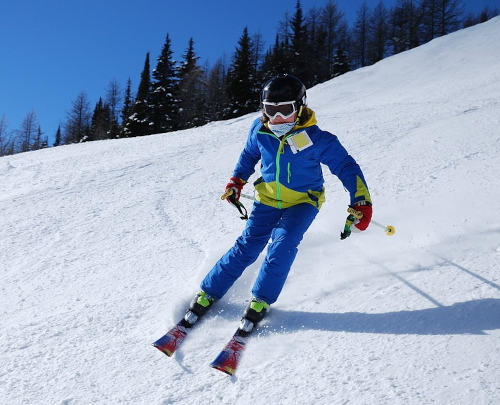
Parallel turns are the bread-and-butter of skiing medium terrain. This turn keeps both skis parallel throughout the movement, allowing for smoother, faster transitions. Also know as ‘french-fries’ because your skis are kept side by side like fries sitting beside each other.
- How to Do It: Shift your weight to the edges of your skis and twist them simultaneously. Keep your knees and ankles flexed and use a pole plant to initiate each turn.
- When to Use It: This is your go-to for most of your steeper-slope (medium runs) skiing. Parallel turns are efficient and provide greater control.
Skid Turn
A skid turn is a smooth, controlled way to change direction on the slopes without gaining too much speed. Knowing how to do a skid turn is essential for steeper slopes.
- How to Do It: gather a bit of speed, then twist your legs so your skis are sideways to the hill (not pointing downhill or uphill but pointing across the hill). Then skid/slip down the hill on the side edges of your skis for a small distance.
- Keep your shoulders (upper body) pointing down the hill and don’t move them when you move your legs. Release both your skis at the same time and move your legs so your skis will point in the opposite direction sideways to the hill and repeat the above.
- When to Use It: Use a skid turn in skiing when you need to control your speed on steeper slopes, especially if conditions are icy or you’re approaching a crowded or narrow section of the trail.
Pro Tips
- Stay loose but in control. Keeping your knees flexible will help absorb any bumps in the snow.
- Keep your weight balanced over your skis both front to back and side to side to help maintain control.
- Don’t lean back on your skis. Leaning back causes loss of control.
- Look where you’re going! This helps with balance and gives you a smooth, intentional line.
Pole Planting: Your Anchor on Steep Terrain
Pole planting is an invaluable skill on steep slopes. Think of it as a stabilizing move, like putting out a hand to steady yourself. Done correctly, a well-timed pole plant will give you the extra balance and rhythm needed to navigate the slope with confidence.
How to Practice Pole Planting:
- Find a Moderate Slope – Head to a slope that’s not too steep for practicing this move.
- Reach and Plant – Reach forward downhill and plant your pole before releasing the edges of your skis into the turn
- Timing is Key – Then as you ski past your pole, push the top of your pole forward (bracing and pushing yourself) as you ski past your pole.
Slowing Down and Stopping on Steeps
Speed control is critical on steeper slopes. While turning helps, there are additional techniques for managing speed or coming to a full stop.
Side Slipping
Side slipping is one of the simplest ways to tame your speed without having to turn, and is part of the skid turn turning technique that we described above. Think of it as skiing’s version of easing on the brakes gently, rather than slamming them and ending up face-first in the snow.
Here’s how to practice it:
- Position: Turn your skis sideways across the slope, so you’re facing the trees, not the abyss below.
- Edge Control: Now, this part is where the magic happens. Tilt both your skis simultaneously ever so slightly onto their edges. Shift your weight slightly uphill.
- Release Pressure: As you lighten up on those edges, you’ll feel yourself start to slide sideways down the hill. It’s like letting out the slack on a rope—at a point you’re moving but still in control. Just keep your weight centered, knees slightly bent, and hands forward. Picture yourself gliding down in a cool, calm, and collected sideways drift.
- Fine-Tune Your Speed: To slow down even more, roll your ankles a bit to increase the angle of your skis against the snow. If you’re going too slow, ease off the edges a smidge, and if you’re going too fast, tilt a bit more. It’s all about finding the right zone.
- Balance: Use a light pole plant and keep your core engaged to stay stable.
The first few times you try this, it might feel like a half-controlled, half-flailing attempt to stay upright. But with practice, you’ll start to feel that satisfying slide
Hockey Stop
This sharp stop is similar to the braking technique used by ice hockey players.
- How to Do It: Start by skiing at a moderate speed, then twist both skis sharply across the slope and dig into the edges. Keep your knees bent and ready to absorb the sudden halt.
- When to Use It: Perfect for quick stops or halting when there’s an unexpected obstacle.
Practice Drills for Turn Technique
To master each turn, drills can help you get a feel for the movements before you’re on a challenging slope. Doing drills might seem boring (like grade-school), but they are incredibly helpful to allow turns to become second-nature to you.
You want to avoid having to mentally remember techniques to implement a turn while you are going down a steep slope. You want it to be very natural. And ski drills are much more enjoyable than drills from your gym class because you are on a gorgeous slope sliding down a fun hill. (Take that gym teacher!)
Do these drills on easier slopes until you are very comfortable with the techniques.
Railroad Tracks Drill (for parallel turns)
- On a gentle slope, practice making wide, parallel arcs without lifting your skis off the snow.
- Keep your skis perfectly parallel to create “railroad tracks” in the snow.
Javelin Drill (for balance and short turns)
- Lift the tail of your inside ski off the snow as you turn, which helps train balance and encourages quicker turns. See a ski instructor demonstrating Javelin drills.
Garland Drill (for controlled edges)
- Instead of completing full turns, glide diagonally down the slope, making only half turns. This drill helps you control your edges and get a feel for quick adjustments. Have a look at ski instructor Deb Armstrong’s instructions to see exactly what this means.
Pivot Slip Drill (to control speed on steeper slopes by practicing skid turns)
- In between pivoting your skis to point across the hill, skid/slip down the hill on the edges of your skis. Keep your upper body pointing downhill while only moving your lower body and legs for the turn. Here’s a helpful video demonstrating how to do this:
Take Some Time to Choose your Line
To “choose your line” in skiing means selecting the specific path or route you plan to take down a slope. This involves assessing the terrain, considering your skill level, and deciding how you’ll maneuver around obstacles like trees, moguls, or patches of ice. A good line allows you to maintain control, adjust your speed, and enjoy a smooth descent while minimizing risks.
A little planning ahead can a world of difference in how you tackle the slope.
Consider taking Lessons
You might be surprised at how beneficial a few ski lessons can be. Ski instructors give tips and advice that directly benefit your ski level and can greatly increase your confidence. I took a few lessons after skiing for a about a year, and the skills I learned kicked me up a level that I wouldn’t have been able to do on my own.
Even experienced skiers take lessons from time to time to improve their skills. It simply makes skiing more fun!
Tips for Different Snow Conditions
Different snow conditions can make a steeper slope feel much more challenging. Here’s how to adjust your approach for common snow conditions:
- Powder: Powder snow requires a lighter touch. Keep your weight centered over your skis and use wider turns to stay afloat.
- Icy Slopes: Use sharper, more controlled turns, as ice offers less grip. Avoid excessive speed, as stopping is trickier.
- Heavy, Wet Snow: Use shorter, more deliberate turns to maintain control. Keep your knees flexed and use more force to initiate turns, as this type of snow will resist.
Putting It All Together
When you’re ready to move to a steeper slope, take a moment to visualize your route. Break the slope into sections and plan your turns ahead of time. Don’t hesitate to take breaks between turns if needed; steep skiing is about control, not rushing. And remember, practice is your best friend! You’ll enjoy the thrill of steep slopes as your confidence grows. With the right preparation, steeper terrain can become one of the most exciting parts of your skiing experience.
Final Tips
- Mind Your Stance: On steeper slopes, keep your weight more forward, not leaning back, as it’s easier to control your skis. Stay over the middle of your skis.
- Stay balanced over your downhill ski: This can be counter intuitive as you might want to put your body weight over your uphill ski to keep your body closer toward the earth above you. Pole planting in front of you can help you maintain this.
- Stay Relaxed: Tensing up can lead to fatigue and loss of balance. Keep your upper body relaxed and focused.
- Warm Up on Moderate Slopes: Start each session on an easier slope to loosen up and rehearse your techniques.
- Be Mindful of Surroundings: When skiing steeps, keep an eye out for potential hazards like rocks, trees, or sudden changes in snow conditions.
- Respect Your Limits: Pushing yourself is good, but listen to your body and recognize when you’re fatigued. Take breaks as needed.
Wrapping Up
Mastering steep slopes is a rewarding journey that requires dedication and practice. By focusing on these techniques, taking your time to develop confidence, and tailoring your approach to conditions, you’re setting yourself up for a great time on the mountain. Skiing steeps is as much a mental challenge as a physical one, and as your skills grow, so will your love for the sport. Now, go carve those turns and enjoy the ride!

by: Cory Willins
Cory is a dynamic and passionate content writer, specializing in sports-related topics. With over a decade of experience in the field, Cory has established… read more

